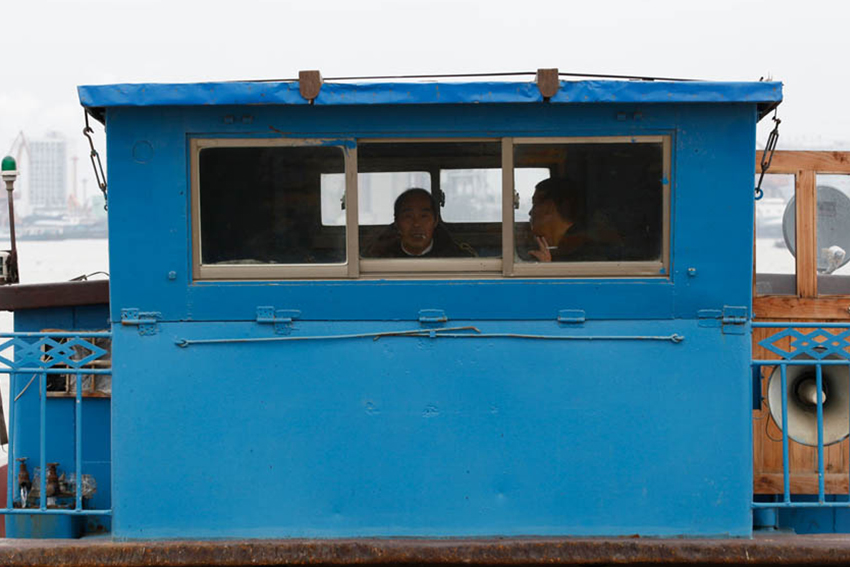Field Recordings: Guo Zixuan, Li Xiaofei, Tu Rapana Neill, Jim Speers and Clinton Watkins
| Date: | Friday 23 Feb - Friday 6 Apr |
|---|---|
| Location: | Gallery One and Two Level 1 WM Building City Campus |

“The ocean is one of capitalism’s mysterious elements,” narrates Mr Kang in one of the five video-channels in Let the Water Flow (2017). Each channel follows a narrative relating to the workers living on boats and along the banks of the Suzhou and Chang Jiang Rivers in Shanghai, and travelling to Hengsha Island. This multi-narrative form is central to Field Recordings’ video work as a collective. Rather than attempting to present an omniscient view of Shanghai, this documentary practice constantly reveals its own limits, and the impossibility of narrative coherence across the numerous perspectives and sites that constitute a city. The consistent undercurrent is water—a physical, political and economic barrier that exists between those making a living on the rivers, and the skyscrapers that represent the proliferation of wealth in the city.
Here in Tāmaki Makaurau, a port city like Shanghai, the sight of shipping containers and urban development is familiar. Gayatri Chakravorty Spivak has written, “Globalisation takes place only in capital and data. Everything else is damage control.”[1] The shipping containers transfer capital and data between the two cities as if unencumbered, and along with them moves ‘everything else’. What does it mean, then, to encounter this work here in Tāmaki Makaurau, in the recognition that ‘here’ is unique to each viewer? It may be possible to record Aotearoa’s relationship with China in economic terms, on the basis of capital transaction and data, but we ourselves, each of us and our lives, are not ‘global’. We are differently located, always situated in and working from a specific place and perspective. Everything we see in these works is in a state of constant movement; the city will no more stay still than the waterways that move through it.
This exhibition is accompanied by a publication, including essays by Emma Ng, Michael Wilson and Hsieh Feng-Rong, which will be launched on 15 March 2018.
[1] Gayatri Chakravorty Spivak, An Aesthetic Education in the Era of Globalization (Cambridge, Massachusetts: Harvard University Press, 2011), 1.
Field Recordingsis presented in association with Auckland Arts Festival 2018.